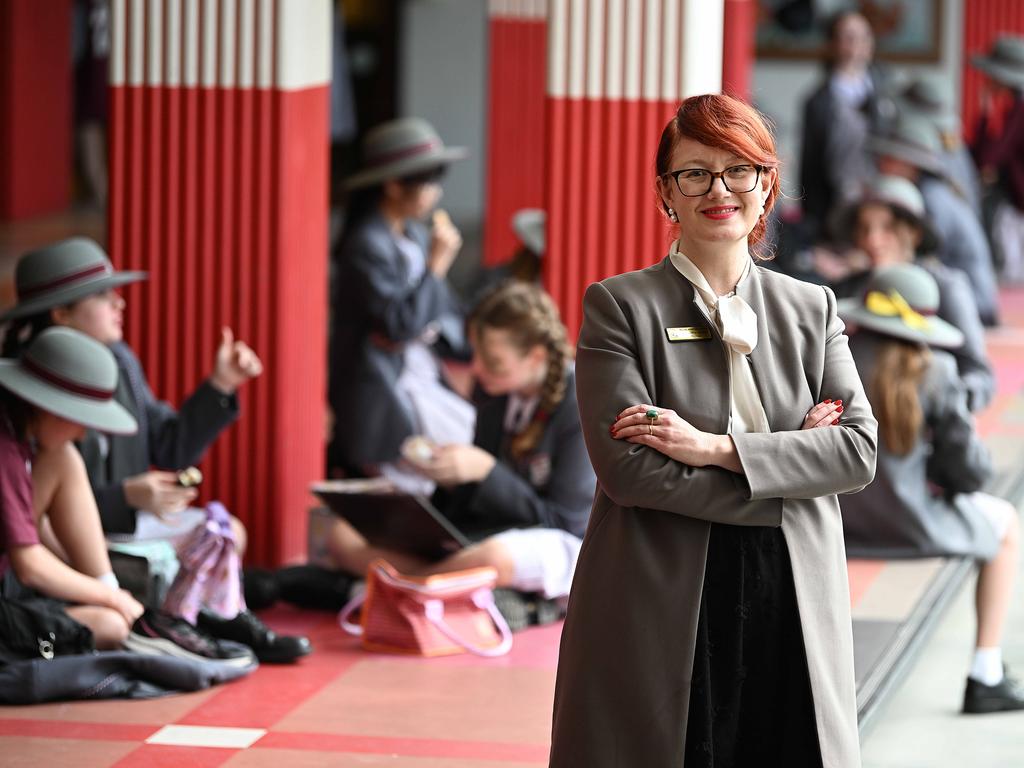400 vacancies: Push for retirees, grey nomads to become teachers
With hundreds of job openings going unfilled, Queensland schools have been urged to ‘get creative’ when it comes to recruitment amid fears a teacher workforce crisis could worsen.
Education
Don't miss out on the headlines from Education. Followed categories will be added to My News.
University lecture-style lessons, schools sharing teachers and grey nomads assisting in rural classrooms could temporarily solve Queensland’s workforce crisis, leading educators say.
With hundreds of teacher vacancies across Queensland’s three sectors – public, Catholic and independent – schools have been urged to “get creative” in recruitment.
It comes on the back of a new report by school workforce improvement company PeopleBench on school staff challenges which has sparked fears the workforce crisis could worsen.
Queensland’s public sector had almost 400 vacancies as of May 31, and now English teachers have joined those in more specialist subjects that are in short supply.
Samantha Jensen, principal of Mount Alvernia College, a Catholic girls school in Kedron in Brisbane’s northwest, said recruitment took up a “huge” amount of her time said there was a real possibility for the crisis to worsen.
Ms Jensen, and other principals, have said if Brisbane schools are dealing with mass shortages, it’s tenfold in regional areas.

“There was once a time when you would get dozens and dozens of candidates, quality ones too, now it’s very hard to find,” Ms Jensen said.
“We aren’t down staff at the moment but that has taken huge amounts of labour to ensure we have teachers in front of students. The recruitment has been ongoing, every week you’re recruiting.
“Earlier this year we lost a specialist teacher so we had to run classes after school temporarily, simply for the availability of the teacher to deliver the course content.”
Ms Jensen urged schools to think outside the box.
“Schools are informally sharing staff. It might be a specialist maths teacher working with two schools utilising their services. You might get some staff not fully attached to one school and are able to be flexible.
“Mount Alvernia is lucky because we have Padua (boys college) and can share senior classes. It might be drama and hospitality, just having that luxury and ability to share where we can.
“You could have specialist science and maths teaching high level instruction through video conferencing from afar. I really sense that is where we are heading towards.”
Queensland University of Technology education expert Professor Martin Mills said university style lecturer/tutor classes was one of many of the solutions put forward.
Prof Mills listed retired teachers rejoining the workforce, and grey nomads assisting in rural and remote schools, but stressed they would only be beneficial in the short term.
“I can see, as a quick fix with a high school focus, is more of the lecturer/tutor approach. One teacher could deliver to two classes and then the unpacking of it is done by two,” he said.
“(But) What strikes me as a concern is that schools are having these conversations… are we going this bad?”
PeopleBench chief research and insights officer Mike Hennessy said the report showed teachers and middle leaders were the most likely to be in a negative space.
More alarmingly, he said, those same teachers were also the most likely to exit the profession over the next year.
“As middle leaders constitute a significant portion of potential future senior leaders and principals, this raises serious concerns about the sustainability of the leadership pipeline,” Mr Hennessy said.
The report revealed the shortages of casual and relief teachers had become more acute.
“With so many teachers leaving the profession, and a dwindling supply of new teachers coming through universities, schools are scrambling to fill gaps in their teaching workforce, and this has created high demand for short-term teachers,” he said.






